Mathematics
for 2nd Grade Students
See what skills your child will learn in Mathematics, examples of student work and how you can help at home.
Tip: Hover over icons to see definitions of key terms.
This is an example tooltip!

Expectations for Students
By the end of the year, 2nd graders should know:
LEARNING 2ND GRADE MATHEMATICS
Mentally add 1-digit numbers. Subtract mentally from a number 20 or less
Understand place value in three-digit numbers. For example, the number 342 refers to 3 hundreds, 4 tens, & 2 ones
3 4 2
Use place value understanding to add & subtract 2-digit and 3-digit numbers. For example, 811 – 367 =444
811 – 367 = 444
Represent and solve challenging word problems involving addition & subtraction
Measure & estimate length in standard units such as centimeters and inches. Solve addition & subtraction word problems involving length
Everyday Activities to Support Learning
Tips for Talking to Teachers
A strong relationship between families and teachers is key to ensuring students have what they need to succeed. Parent involvement not only leads to higher grades and test scores, but also helps students develop self-confidence, motivation, and social skills. Knowing what questions to ask at school visits and parent-teacher conferences can help you feel confident when it comes to addressing your child’s’ academic needs.

